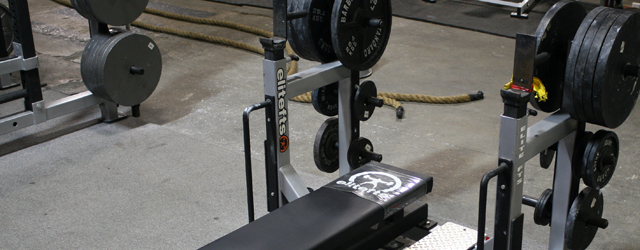
Troubleshooting the Unrack on the Bench Press
As the title suggests, this article is all about a very crucial yet often overlooked part of the bench press—unracking the bar. Now, if you train with a spotter or by yourself, unracking the bar without losing your positioning is key. If this is lost, the whole set is pretty much worthless. In addition, you run a higher risk of getting injured.
Now, let’s throw in some anatomy for all the A&P guys and gals out there. The muscles responsible for the unracking process are the rear deltoids, teres minor and major, infraspinatus, lats, pec major and minor, and serratus anterior. Of course, the arms are involved as well, but they are secondary (at least for this particular article).
One of the main reasons why people have problems unracking the bar is because these muscles are weak and they need to be strengthened or they haven't been activated (usually a mix of both). The question you're probably asking yourself is, "How do I address this issue?" Well, allow me to introduce the band resisted pull-over and press. The set up for this exercise is simple. Just choke the bands around the chin-up bar on your squat rack, move the bench far enough away to create the proper tension, and you're ready to go.
This exercise addresses the issues mentioned above with an added bonus. Because you have to pull the bands forward, you also must pull them down, simulating the process of “pulling the bar into your chest.” This forces you to engage the muscles of the mid to upper back tremendously and will lead to a better press. After all, it’s the muscle behind you that makes it possible to push that bar back up. For those still having trouble “seeing it,” I've included a video of the exercise for your viewing pleasure. The girl in the video hit a PR of 90 lbs that day (she’s only at a body weight of 108 lbs)!
The bands you'll want to use are the mini bands (ladies) and monster minis (guys). Please let me know in the comments section what you think about this. I love the feedback.
Band resisted pull-over and press:









